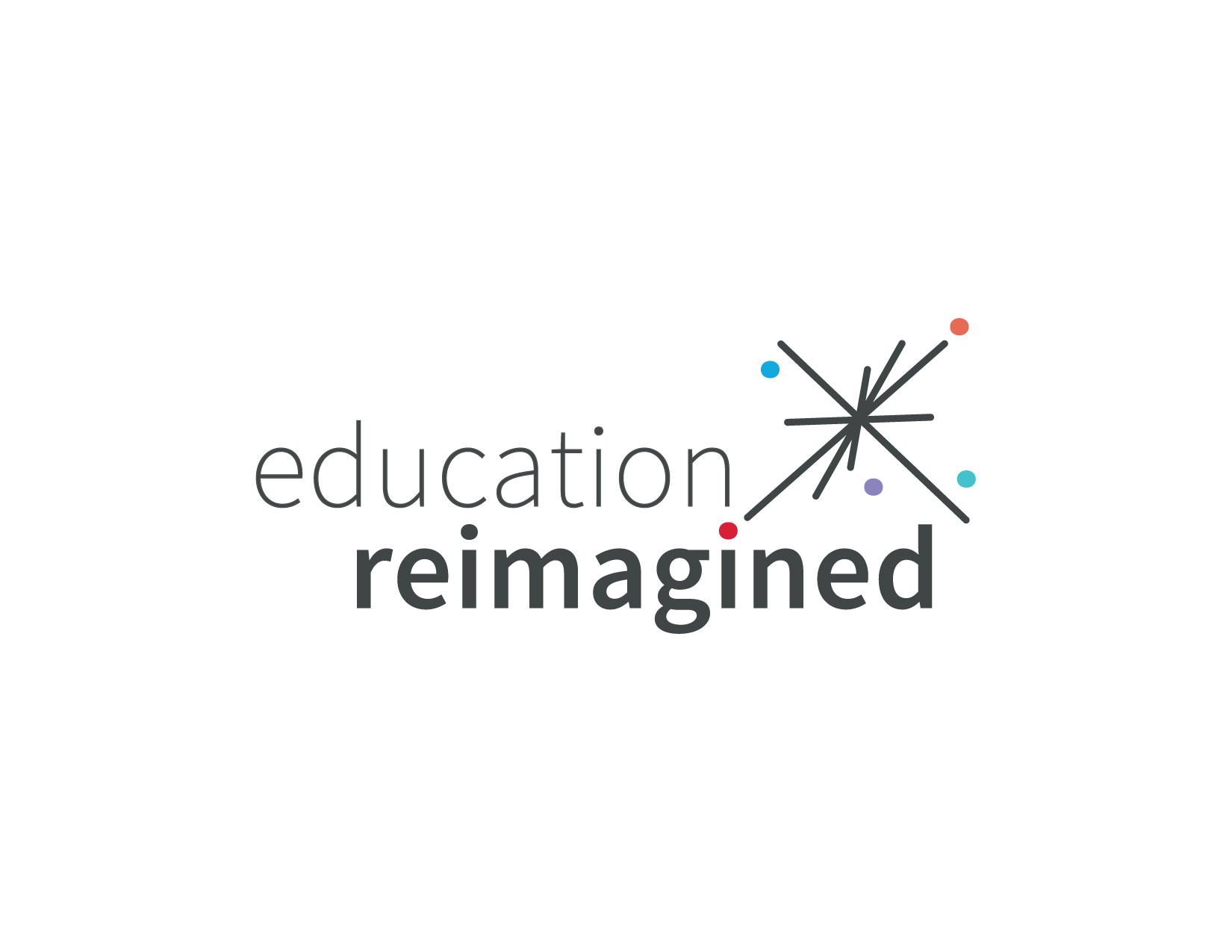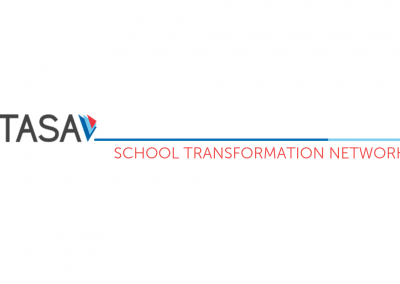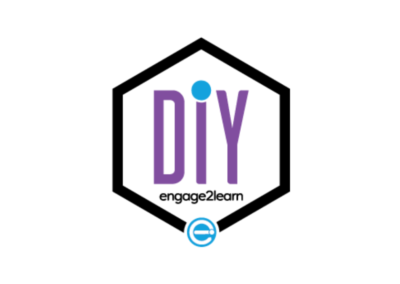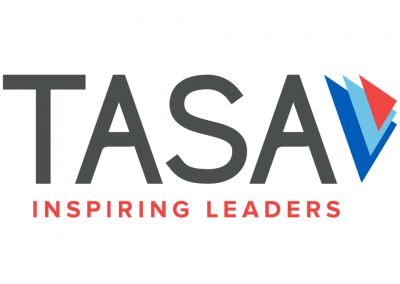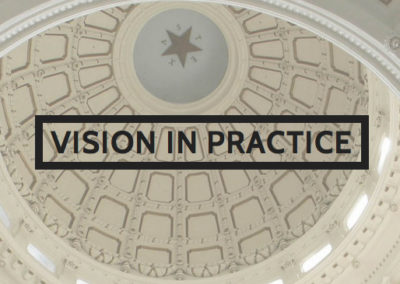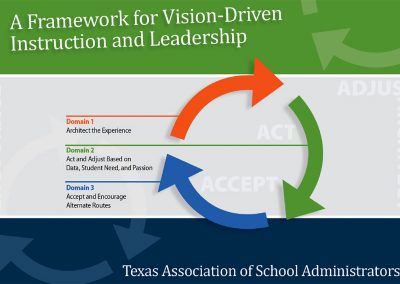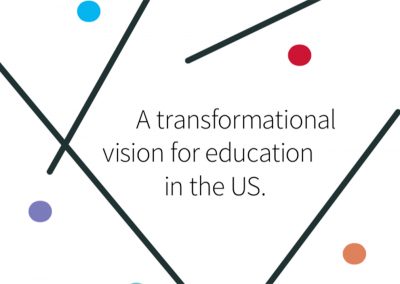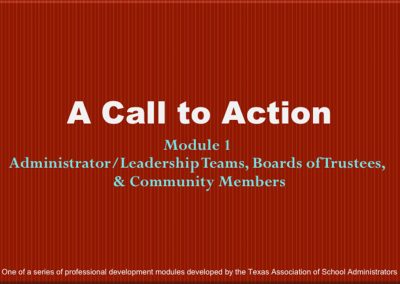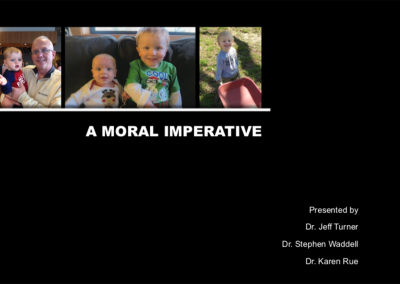With organizational transformation, our schools will be learner-centered environments with:
Students who are committed to being co-managers of their learning processes and who are engaged in meaningful instruction based on rigorous content with teachers whose roles have been redefined to guide students to a learning path toward post-secondary experiences and future life opportunities; and
Teachers who are supported with mentoring, collaboration, social support, and purposeful professional development tailored to their needs or those of their students, and who are engaged in leadership development opportunities.
The Vision: Organizational Transformation
Article 5: Organizational Transformation
Supporting Premises
- Excellence emanates from a shared commitment to values and standards, high levels of engagement, and strong leadership at levels functioning within an accountability system that inspires.
- The teacher’s most important role is to be a designer of engaging experiences for students, supporting students in their work by incorporating more traditional roles as planner, presenter, instructor, and performer.
- The overall quality of the present teaching force is excellent, and most teachers are capable and willing to take on their new designer role if their sense of moral purpose for entering teaching is honored, and if they are provided relevant developmental opportunities and a climate and conditions that support them.
- To attempt to incentivize teachers with material rewards for improving test scores is an insult to teachers and infers that improvements in learning can be measured with precision. Such pay schemes should not be mandated by the state but left to the discretion of local districts.
- The costly loss of so many teachers from the profession in the first three to five years of employment is likely more a function of the social systems and conditions that dominate most schools than a lack of material rewards.
- Districts will have increasing difficulty in attracting experienced teachers to teach in poverty-stricken schools, and the overall teacher retention rate will decline even further if federal and state bureaucratic controls continue excessive focus on high-stakes standardized tests.
- Leadership development at all levels (teachers, included) must become a primary means of building needed capacities to function in required new roles.
- Students are in charge of determining where their attention, effort, and commitment go, and their access to information gives them even more power; hence, they must be treated accordingly.
- The variation in student learning is as much a function of student effort as it is of ability, meaning that we must incorporate into the tasks we design and assign to students those qualities that will increase engagement.
- Profound learning (owning the knowledge) as opposed to superficial learning (short-term memory) comes more from engagement and commitment than from various forms of compliance, coercion, sanctions, or rewards.
- The use of too tightly monitored curriculum and a scripted approach to teaching to ensure coverage of the material for the test instead of broad understandings of connected content is a detriment to profound learning.
- The district is responsible for creating the conditions in which student commitment and engagement become central and for attracting principals and teachers who can learn to use appropriate frameworks, protocols, processes, assessments, and resources in different ways in a collaborative setting.
- Operating and social systems exist in all organizations including schools. Transforming these systems is the only way to transform schools into the type of organization needed.
Alamo Heights ISD
Colin Lang, aerospace studies teacher at Alamo Heights High School in Alamo Heights ISD has a saying in his class: “More of you and less of me is a very good thing,” meaning teachers need to transition their classroom from a “teacher-centered” environment to a “student-centered” one.
Bryan ISD
District growth is not always just about numbers – it’s also about a new mindset. Regardless of their current circumstances, students and staff members are encouraged to see the possibilities ahead and realize that hard work will lead to successfully reaching their goals.
Clear Creek ISD
The Leader in Me program at Falcon Pass Elementary is a transformative program focused on building student leadership skills. The teachers take a supporting role, allowing students to build confidence in their skills and use them to make real change in the world.
DeKalb ISD
Prior to the start of the 2016-17 school year, DeKalb ISD hosted the North East Texas Leading and Learning Conference to bring educators together to explore best practices for engaging students and increasing productivity, and to focus on leading and learning through the use of technology. Learn more.
Grand Prairie ISD
Grand Prairie ISD was chosen by the Holdsworth Center to be in the first District Leadership Cohort. As part of the cohort’s work, a new definition of leadership was developed that provides a framework for decision making and district vision. This video was shown district-wide in preparation for organizational transformation.
Harlingen CISD
During Harlingen CISD’s Little Innovators competition, fifth-grade inventors pitch their ideas to local business professionals during a Shark Tank-themed event. It’s an annual culminating activity that brings together several areas of learning for students.
Highland Park ISD
Teachers involved in Highland Park ISD’s STEAM initiative say it is a fun way to teach that encourages students to think more deeply as they work to create something on their own. It integrates several disciplines, including reading and math, for real-world learning and engages not only students, but teachers as well.
Lytle ISD
Lytle ISD provides teachers with a second conference period for facilitated collaboration called Design Time. Teachers discuss how standards can be taught to a “profound level” by examining student work, teaching strategies, and assessment opportunities to design more engaging learning opportunities.
Roscoe Collegiate ISD
The Roscoe Collegiate P-20 System Model for Student Success is a collaborative, sustainable model for breaking the generational poverty cycle through higher education, while filling agricultural STEM workforce shortage areas that will be critical to feeding and clothing the 9 billion people on the planet by 2050.
San Angelo ISD
A learner-centered environment is evident in San Angelo ISD, where Advanced Placement students from Lake View High School build models of roller coasters that they use to demonstrate and explain calculus and physics principles to fourth graders. The project teaches the high school students a real-world application of the principles but also brings the concepts to elementary level.
Splendora ISD
Splendora ISD students created this video for use in a teacher training. In it, they discuss different aspects of student engagement through NAAAPC: Novelty and Variety, Affirmation, Authenticity, Affiliation, Product Focus, and Choice. Splendora ISD is designing intentional structures and processes for student voice to inform their work in curriculum, instruction, leadership and culture.
Related News
Learner-Centered Education Across the U.S.
Sharing the possibility of learner-centered education with a broad spectrum of education stakeholder groups, so as to attract new leaders and grow support for transformational efforts.
Identifying and emboldening learner-centered leaders already at work in communities, school systems, policy arenas, and the education profession, growing the number of leaders who see themselves as part of a larger movement.
Igniting and fostering ever-growing communities of diverse learner-centered leaders who wouldn’t otherwise see each other as allies in a movement—and creating the conditions for them to effectively collaborate, innovate, and advocate together.
